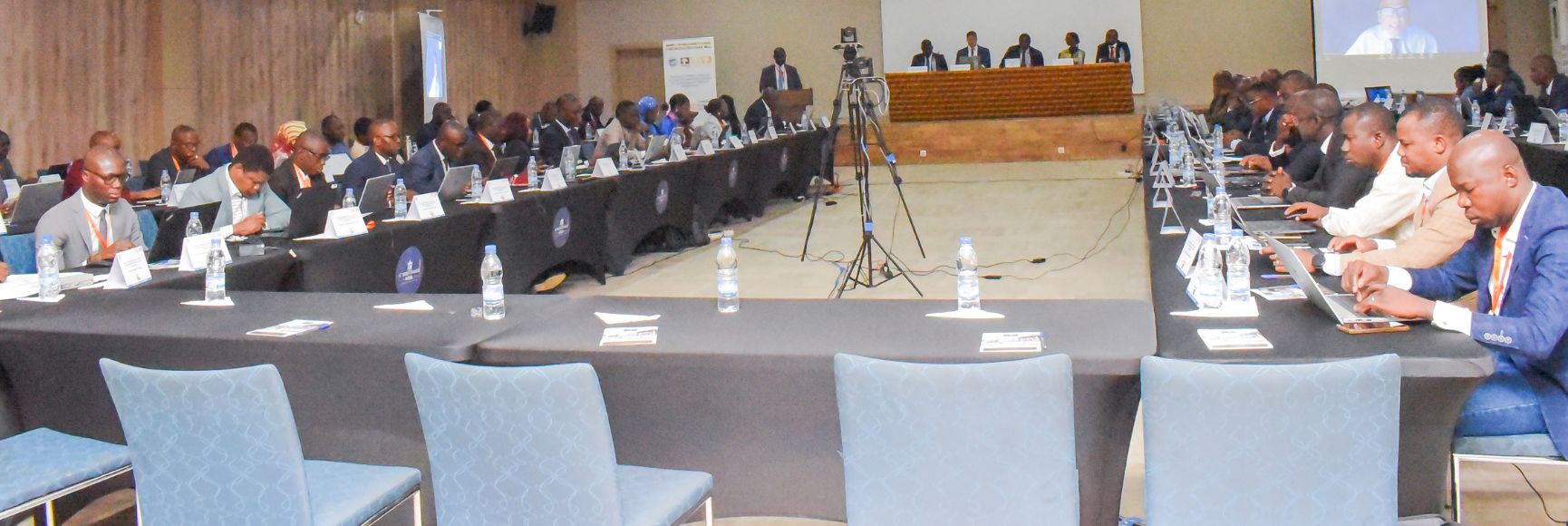Posted by Rachel F. Wang

On November 1, 2012, the IMF’s Fiscal Affairs Department (FAD) published a policy paper entitled, “”. The paper reviews the progress made in improving fiscal reporting since the late 1990s; considers what the global financial crisis has taught us about the adequacy of prevailing fiscal transparency standards, practices, and monitoring; and makes a series of recommendations for revitalizing the global fiscal transparency effort in the wake of the crisis. Richard Allen, a seasoned advisor on public financial management issues and former deputy division chief in FAD, sat down with Richard Hughes, the new head of FAD’s Public Financial Management Division I and co-author of the paper, to talk about its key insights and implications.
Richard Allen (RA): Can you tell me why it was decided to prepare a new IMF policy paper on fiscal transparency?
Richard Hughes (RH): There were really two motivations.
The first motivation was that the IMF has been in the fiscal transparency business for about 15 years. We started work in earnest in the wake of the Asian Financial Crisis with the development of the Fiscal Transparency Code (Code of Good Practices on Fiscal Transparency) and Manual (Manual on Fiscal Transparency) and the Fiscal ROSC (Reports on the Observance of Standards and Codes). So, 15 years on, we wanted to take stock of how much progress we have made in promoting greater fiscal transparency, review how these fiscal transparency instruments were performing, and look at how much work was left to be done.
The more immediate motivation was the global financial crisis itself. The recent crisis has been a real stress test for existing fiscal reporting standards and practices, a test which no country, not even the most advanced, passed with flying colors. So, the other motivation for the paper was a desire to assess what the crisis has taught us about the strengths and weaknesses in both the global architecture of fiscal transparency standards and in countries’ application of those standards in their own jurisdictions.
RA: What are the main findings and recommendations of the paper?
RH: One message that we tried to underscore in the paper is that the world has made progress over the last 15 years. There can be a tendency for people to be slightly despairing about a subject like fiscal transparency. A common assumption is that governments continue to hide lots of information and that things haven’t really gotten better.
But in fact the institutional coverage of government’s budgets, statistics, and accounts has expanded significantly over the last decade. Over 40 percent of IMF member countries’ fiscal statistics now cover at least the general government compared with just one-quarter in the mid-2000s. We also found that more and more countries are moving from simple cash accounting toward partial or full accrual accounting and thereby capture a broader array of transactions and flows in those reports.
On the other hand, it was disappointing to note that only 14 of the IMF’s 184 member countries were able to produce a comprehensive government balance sheets that cover both their financial and nonfinancial assets and liabilities, despite the fact that international reporting standards like GFSM2001 (Government Finance Statistics Manual 2001) and IPSAS (International Public Sector Accounting Standards) have been calling for this for over a decade.
RA: This must mean that quite a lot of OECD countries, supposedly the most advanced countries in the world, still do not prepare and publish comprehensive fiscal reports. Is that correct?
RH: Yes, that’s right. One of the key messages of the paper was actually how far some of the most advanced countries are from complying with international fiscal transparency standards and how these gaps in their reporting exacerbated the fiscal impact of the crisis.
There’s a section in the paper which reviews the experience of the ten countries that saw the biggest unexpected increases in government debt between 2007 and 2010. All of those countries were advanced countries. Obviously, the financial and economic crisis itself played a big role in this, but when you break it all down, about a quarter of that debt shock was due to failures in retrospective fiscal reporting; or gaps in what the governments should have known about the present state of their finances, rather than any uncertainty about what might happen in future.
RA: There are a lot of public bodies – state-owned corporations, social security funds, etc. – which are outside the central government budget, but which may create significant fiscal risks. Are these issues especially important in improving fiscal transparency?
RH: This is probably the single biggest weakness in countries’ fiscal reporting practices and one that was really brought to the fore during the crisis. A key lesson of the crisis is that these public entities that are out of sight also become out of mind for fiscal policy-makers in ministries of finance and legislatures. This lack of attention can result in these entities drifting into deeper and deeper financial trouble on a scale of which is often not discovered until they are on the border of insolvency.
One example is Fannie Mae and Freddie Mac. According to U.S. law, these were private sector financial institutions outside the scope of federal government financial reports. But anybody who lent them money was firm in their belief that their liabilities were guaranteed by the United States Government. Ultimately when Fannie and Freddie got into trouble in the wake of the financial crisis, they had to be bailed out by the U.S. Treasury and taxpayers who I’m sure now wish they had kept a closer eye on these institutions.
So one of the key lessons of the crisis is the need to expand our definition and understanding of what we consider to be “The Government” for fiscal reporting purposes.
 RA: Looking ahead, what actions are the Fiscal Affairs Department and the IMF going to take to follow up on this work?
RA: Looking ahead, what actions are the Fiscal Affairs Department and the IMF going to take to follow up on this work?
RH: The paper sets out a pretty ambitious work plan going forward. Part of it involves working with the international standards-setting community, such as our own Statistics Department, the IPSAS Board, and Eurostat to address the weaknesses in international financial reporting standards revealed by the crisis. Another important area of follow-up work is to look again at the design of the fiscal ROSC, the Fund’s instrument for evaluating a country’s fiscal transparency practices. We’ve seen a real falloff in demand from countries for ROSC evaluations. We used to carry out about 20 ROSCs a year in the early 2000s, but last year we did just one.
Part of this fall-off in demand for the ROSC is a reflection of the fact that the Fiscal Transparency Code on which the ROSC is based has become a bit dated. There is a need to reflect recent developments in reporting standards and the lessons from the crisis in the relevant provisions of the Code itself. But there is also a need to revisit the structure and format of the Code to ensure that it remains relevant for countries at all levels of institutional development.
One of the shortcomings of the existing Fiscal Transparency Code, and the architecture of fiscal reporting standards in general, is that they focus on providing a single “best practice” standard. But as standards develop, these best practices are becoming more and more out of reach for countries that are only just starting down the path to fiscal transparency. So one of the ideas we are considering in revising the Code is whether it should provide a more differentiated set of milestones, distinguishing between basic, good, and best practice in each area of fiscal reporting, which countries can use to chart a course to full compliance with international standards.
This is just one idea we are considering in the context of revising the Code, but we also want to hear what other standard-setters, practitioners, civil society groups, markets, and the public think about how it can be improved. We’re planning to launch a public consultation on revisions to the Fiscal Transparency Code on December 10th of this year, and I’m looking forward to hearing what people [civil society, NGOs and national and international organizations] have to say. Once we have received feedback from hopefully many quarters, our aim is to have a revised draft of the Code and the Manual for further consultation in the Spring of 2013 and a final version of both by the Autumn.
RA: Do you think the IMF pushes countries too fast down the road of sophisticated reforms such as accrual accounting and budgeting? Is such a policy reasonable, particularly for developing countries with low capacity in accounting?
RH: I don’t think the issue is so much us pushing countries down this route as it is us having to find a way to respond to the requests and demands of our member countries. We are frequently approached by enthusiastic and innovative ministers, permanent secretaries, and accountant generals who want their countries to become more transparent and implement international accounting and reporting standards. Given the time, energy, and effort that go into these kind of accounting reforms, no one wants to hear that at the end of it you will have reached “modified cash” or “partial accrual” accounting – they want to be at the “state of the art.”
So we try and give countries advice which responds to their desire to make progress toward the upper echelons of reporting practice but which is also realistic about the timeframe for getting there. At the same time, no finance minister or accountant general wants to hear that you won’t get any results for a decade or two – they’ll either be on the opposition benches or retired by that point! So we try to structure our advice to deliver some results early while sustaining the momentum of reform over the longer-term as well.
A good example of this is a new Technical Note and Manual which we will be publishing in the new year about sequencing the moving from cash to accrual accounting. The aim of this note is to try to “demystify” the process by breaking it down into a set of practical and concrete steps that get you from here to there and hopefully make the whole reform seem a bit less daunting for those contemplating going down this route.
RA: One final question, what impact do you think the findings and recommendations of your paper will have on big economies, such as the U.S., EU and Japan, which still have large fiscal challenges?
RH: I think there is a limit to how much impact any one paper can have on any of these large economies – especially one as, er, “specialized” as this one. [laughs]. There is already a very lively debate in the U.S., Japan, and Europe on how to respond to their respective fiscal challenges. My hope is that this paper and the work we do over the coming years will encourage these countries to make improving their fiscal transparency practices part of any comprehensive response to those challenges. Because doing so will not only inform their policy response to this crisis but will also help to reduce the likelihood and impact of another fiscal crisis of this magnitude in future.
Note: The posts on the IMF PFM Blog should not be reported as representing the views of the IMF. The views expressed are those of the authors and do not necessarily represent those of the IMF or IMF policy.





